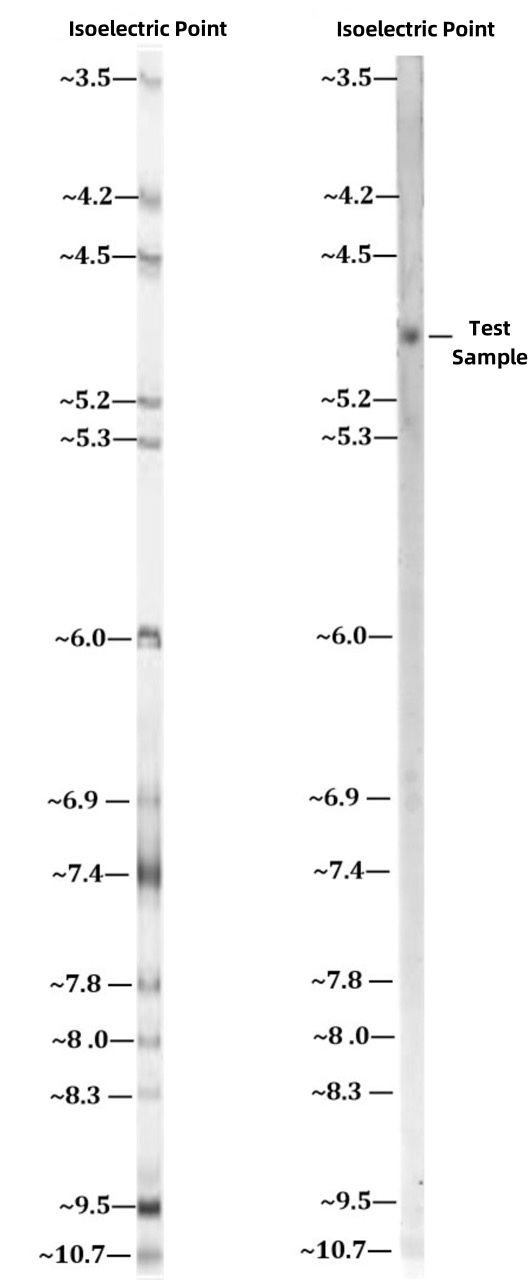IEF Protein Isoelectric Points Analysis Service
Protein molecules are ampholytes. When the pH of the solution is adjusted so that the positive and negative charges on the protein molecules are equal, the protein molecules do not move towards either the positive or negative electrodes in an electric field. At this point, the pH of the solution is the isoelectric point (pI) of the protein. The pI of a protein is closely related to its amino acid sequence and tertiary structure, and the pI of a particular protein is fixed. Therefore, differences in structure and function between different proteins can be studied by comparing their pIs. Accurate determination of the pI is crucial for characterizing the charge heterogeneity of biological products.
Isoelectric focusing (IEF) is a highly effective technique for protein pI analysis. By leveraging the characteristic that the charge of a protein at its pI is zero, charged proteins migrate in opposite directions during electrophoresis. When they reach their pI (the pH at which the corresponding protein is no longer charged), the current reaches a minimum, and the proteins stop moving, thereby allowing the pI of biological products to be detected. MtoZ Biolabs has established a protein pI detection platform for different types of biological products based on the principle of IEF. It can accurately determine the pIs of proteins, antibodies, vaccines, peptides, collagen, and other biological products.
Experimental Instruments
1. Ettan IPGphor 3 by GE
Applications
PI analysis based on cIEF detects absorption peaks at 280 nm. For biological products that do not have absorption peaks at 280 nm, such as collagen, the cIEF method is evidently not suitable. The IEF-based method is an effective supplement for detecting the pIs of proteins without absorption peaks at 280 nm and has been widely applied in the characterization of collagen biological products and medical devices.
Sample Results
In the experiment, one strip was used to test the marker, calibrating the pI distribution of the prefabricated strip, while another strip was used to test the sample. Both strips underwent IEF simultaneously to reduce system error.

Figure 1. PI Marker Results (Left); Collagen Sample Results (Right)
FAQ
Q1: Why are most proteins' pIs slightly acidic?
Proteins are composed of amino acids, and most amino acids have pIs lower than the body's pH (pH=7.4). Thus, the pIs of most proteins are slightly acidic. For instance, the pI of goat pepsin is about 3.
Q2: Are there proteins with alkaline pIs?
There are proteins with alkaline pI. When the proportion of basic amino acids such as histidine, arginine, and lysine in a protein is relatively high, the pI shifts to alkaline, such as protamine, whose pI is about 12.
Q3: How should the two detection methods for pIs be selected?
PI detection based on cIEF requires samples with UV absorption at 280 nm. Samples without UV absorption at 280 nm (such as collagen) should use IEF-based pI detection.
Deliverables
In the technical report, MtoZ Biolabs will provide you with detailed technical information, including:
1. Experimental Procedures
2. Relevant Mass Spectrometry Parameters
3. Detailed Information on Protein PI Analysis Based on IEF
4. Electrophoresis Images
5. Raw Data
How to order?







